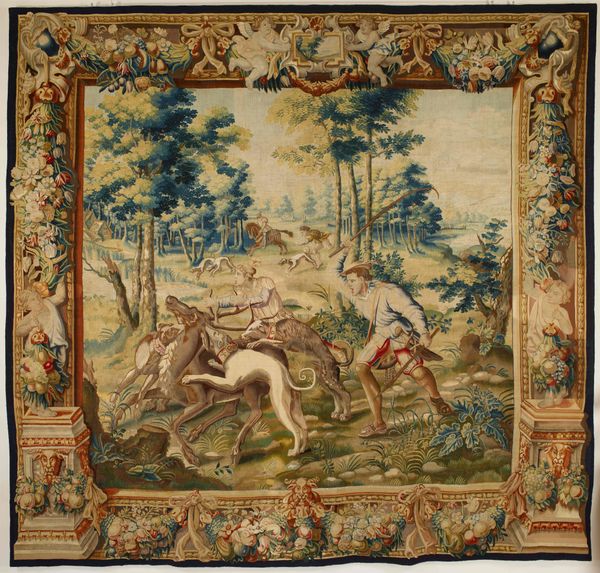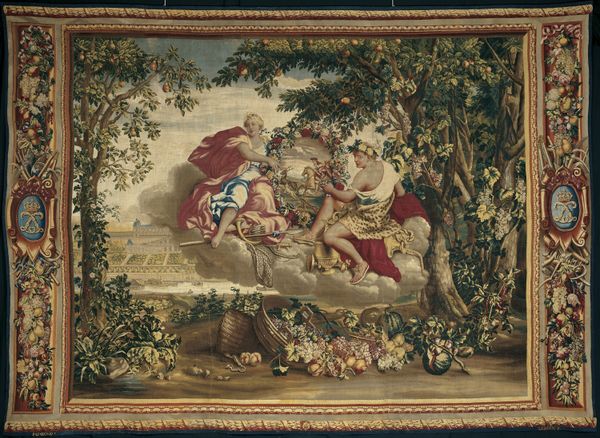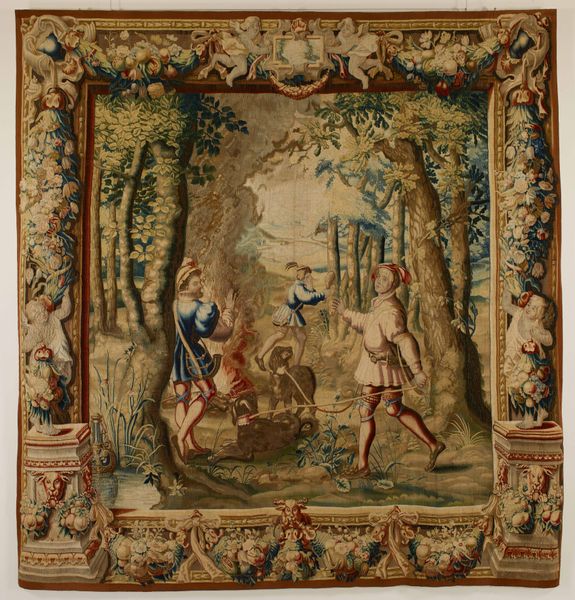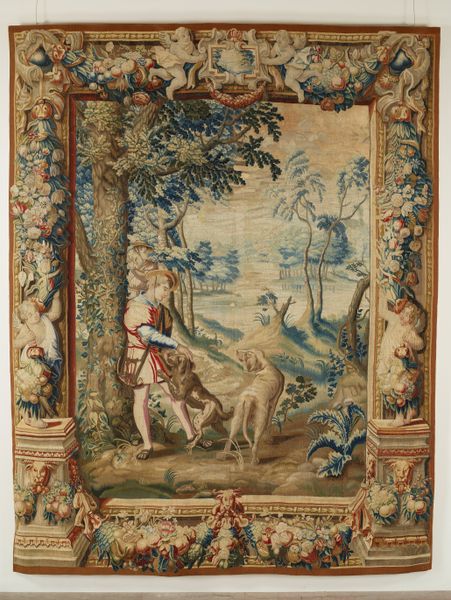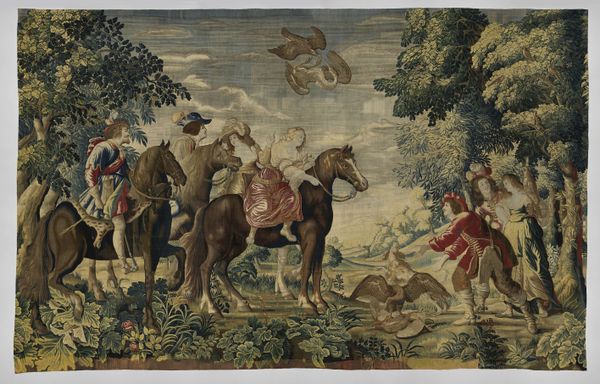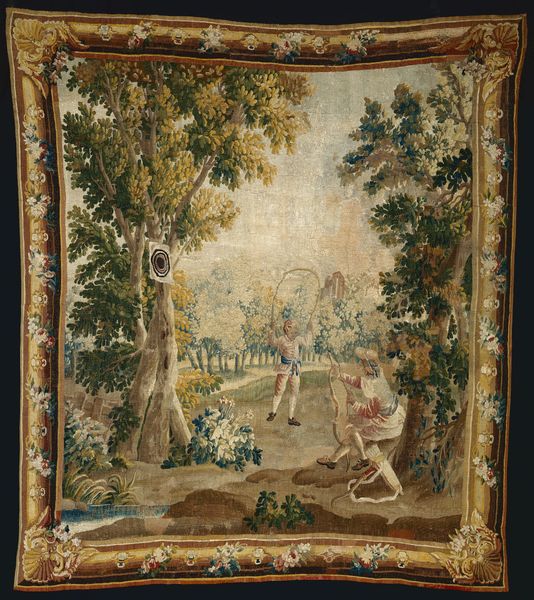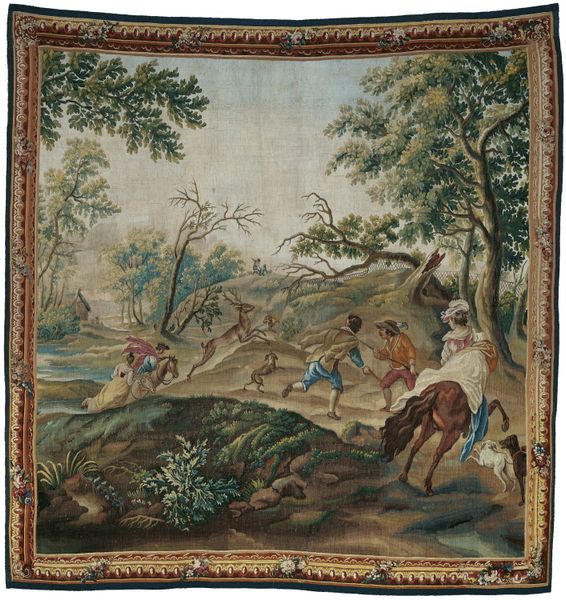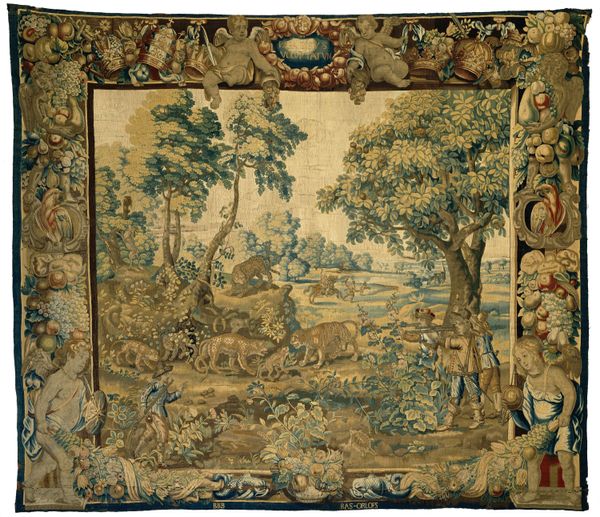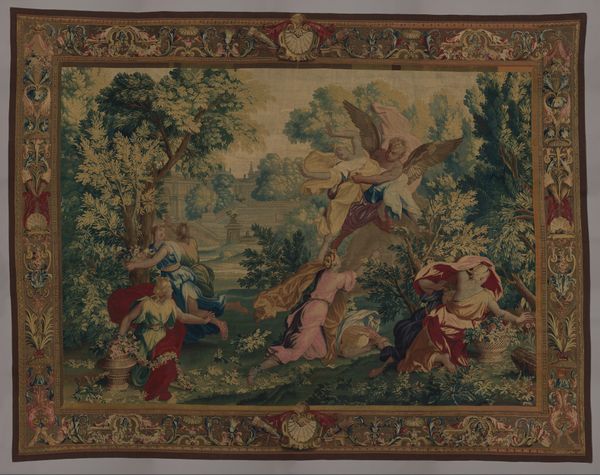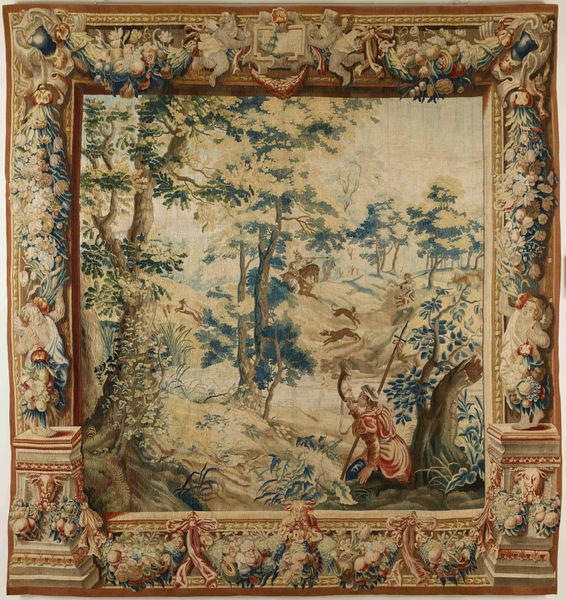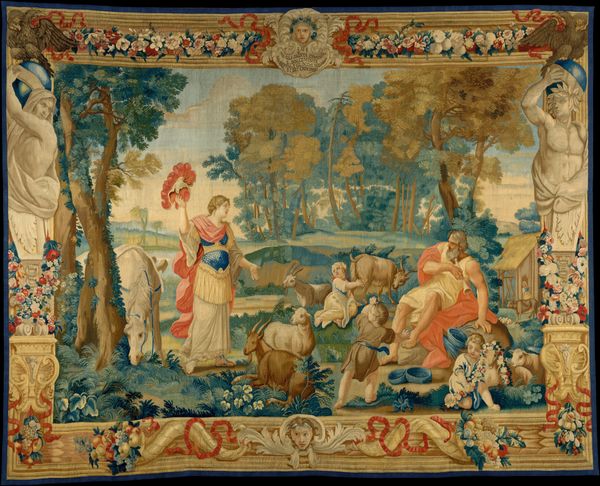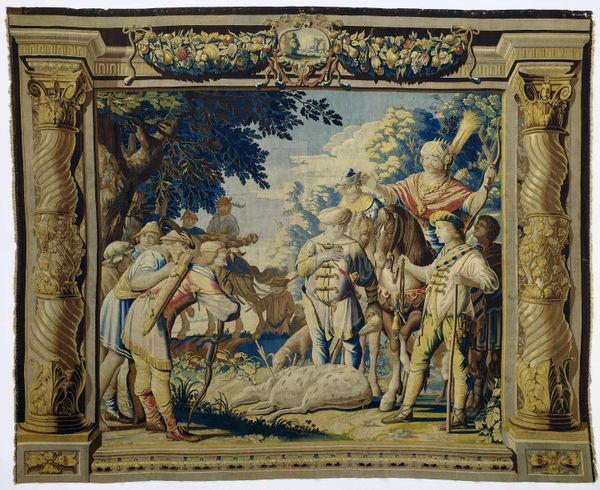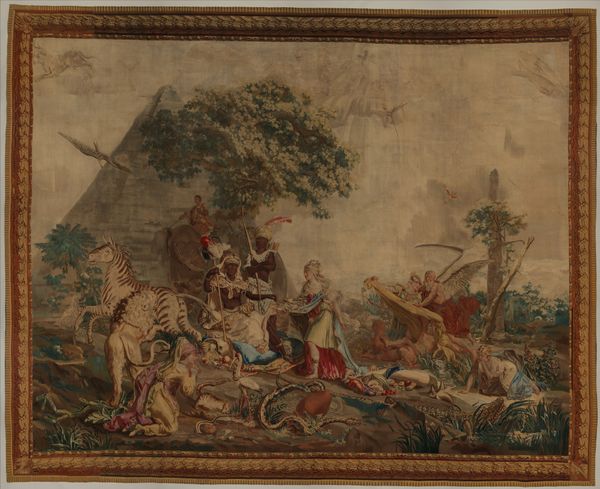
mixed-media, painting, textile
#
fairy-painting
#
mixed-media
#
allegory
#
baroque
#
painting
#
landscape
#
winter
#
textile
#
oil painting
#
forest
#
earthy tone
#
mixed media
#
watercolor
Dimensions: 540.07 × 384.81 cm (212 5/8 × 151 1/2 in.)
Copyright: Public Domain
Curator: Before us hangs "Winter," one from a series of tapestries called "The Seasons." They were designed by Charles Le Brun sometime between 1700 and 1720. Editor: My first thought is how carefully staged it all appears. The figures seem caught between earthly and divine realms, all depicted in fairly muted earthy tones. It’s rather… melancholic, wouldn't you agree? Curator: Indeed. Le Brun was deeply involved in shaping artistic taste at the court of Louis XIV. The very idea of representing winter allegorically places it within a framework of established visual conventions and the politics surrounding the Sun King. Editor: Visually, I’m drawn to the wreath. A collaborative effort between a winged male figure – Boreas perhaps – and a female one, who, together, are crowning the infant Winter at its center. Wreaths so often signal victory or honor, don't they? Here, though, it's a somewhat bittersweet acknowledgment of the season’s inevitable reign. Curator: Precisely. Consider that the tapestries of "The Seasons" likely adorned walls within the royal residences, projecting power but also signifying cultivated appreciation for the natural order. Each one reinforced a sense of enduring stability, reflective of Louis's France. Editor: And what do you make of the items strewn at the base? The dead game, the barren landscape... These symbols paint a bleak portrait. They remind viewers of mortality. The death of nature implies also that it will be born again, which can act as reassurance for royal subjects. Curator: Such scenes provided a framework to legitimize power and privilege, while ostensibly serving aesthetic purposes. Woven with threads of patronage and symbolism, tapestries became significant political tools of imagery and taste. Editor: It’s fascinating how textiles—something so domestic and functional—become vehicles for communicating intricate messages. Looking closer, one sees death and deprivation, yet also the promise of rebirth, carefully packaged for an elite audience. Curator: Tapestries like these were essential in crafting an environment where social order seemed ordained, woven right into the fabric of the state itself, quite literally. Editor: It seems what appears on the surface to be a quaint nature scene becomes more complex when one sees it through the cultural context that shaped its making.
Comments
No comments
Be the first to comment and join the conversation on the ultimate creative platform.
